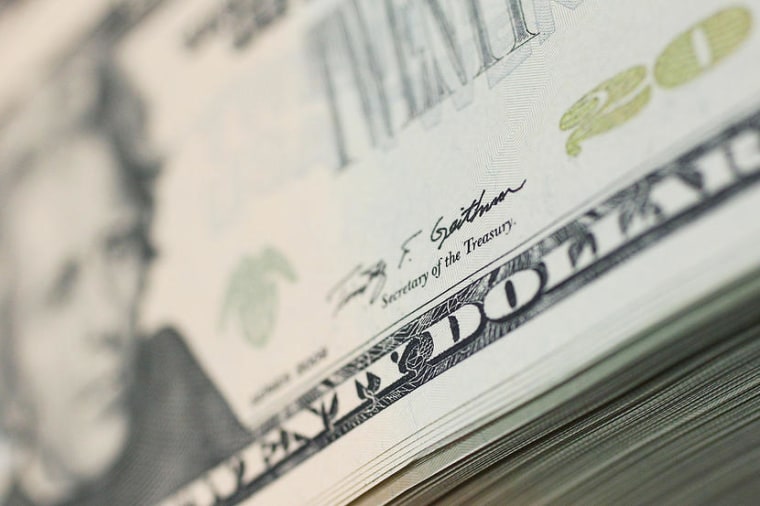The Centers for Disease for Control and Prevention recently mailed a coronavirus advisory to many U.S. households, and the wording on the front of the large postcard did not go unnoticed. "President Trump's Coronavirus Guidelines For America" it read in all-capital letters.
It wasn't long before some questioned whether the mailing was intended, at least in part, to help promote Donald Trump.
It was against this backdrop that the Wall Street Journal had this report on the heels of the president signing the $2.2 trillion economic aid package into law late last week.
Mr. Trump has told people he wants his signature to appear on the direct payment checks that will go out to many Americans in the coming weeks, according to an administration official. The White House didn't comment. Normally, a civil servant -- the disbursing officer for the payment center -- would sign federal checks, said Don Hammond, a former senior Treasury Department official.
It's not yet clear if the president will get his wish on this, though the reporting further reinforces impressions that Trump continues to see the crisis though a public-relations lens.
Speaking of the money that Americans are likely to receive through the aid package, this seems like a good opportunity to review some relevant details.
Broadly speaking, there are two pools of money to keep an eye on. The first is the money for direct payments, and as NBC News reported this morning, the IRS has shared some fresh details on how Americans can access the benefit.
For Americans eligible for stimulus cash under the new relief law, the fastest way to receive it is to make sure they've filed a tax return for 2019 or 2018 with bank information so the government can directly deposit the money. The IRS says it will use a person's 2019 return to calculate eligibility and automatically send the money to those who qualify. If they haven't filed a 2019 return, it'll be based on the 2018 return. The agency said it would publish additional information about the new forms soon on irs.gov/coronavirus.
Note, the $1,200 payments -- with an additional $500 per child under the age of 17 -- will go to those with an annual income up to $75,000. The direct payment will decrease from there -- subtract $5 for every $100 in income above $75,000 -- before capping out at $99,000. As NBC News' report added the phase-out range for married couples is $150,000 to $198,000.
Note, these direct payments are not based on employment status: those who qualify will get the money, whether they're fully employed or out of work.
All of which serves as a convenient segue to the other pool of money from the aid package to keep in mind: expanded unemployment benefits. Mother Jones' Kevin Drum published a terrific primer on the subject overnight, and I continue to believe it's the critical element of the $2.2 trillion bill.
Covered individuals include anyone normally eligible for unemployment benefits under your state's laws. Additionally, you are covered even if you are (a) self-employed, (b) seeking part-time employment, (c) do not have sufficient work history, (d) otherwise wouldn't qualify for regular unemployment benefits, or (e) you have exhausted your normal and emergency benefits under state law. You are not eligible for benefits if you can telecommute or you're on sick leave.
Remember, thanks to Senate Democrats' efforts, the unemployment insurance provisions of the new law adding $600 -- per week -- to whatever out-of-work Americans would get from their state UI system.
There's been a lot of discussion of late on just how spectacularly brutal the employment landscape is becoming, and for good reason: Americans haven't seen numbers like these since the Great Depression.
But during the Great Depression, unemployment insurance didn't exist, and the money families will receive from the economic aid package this year will serve as a temporary lifeline for millions.

